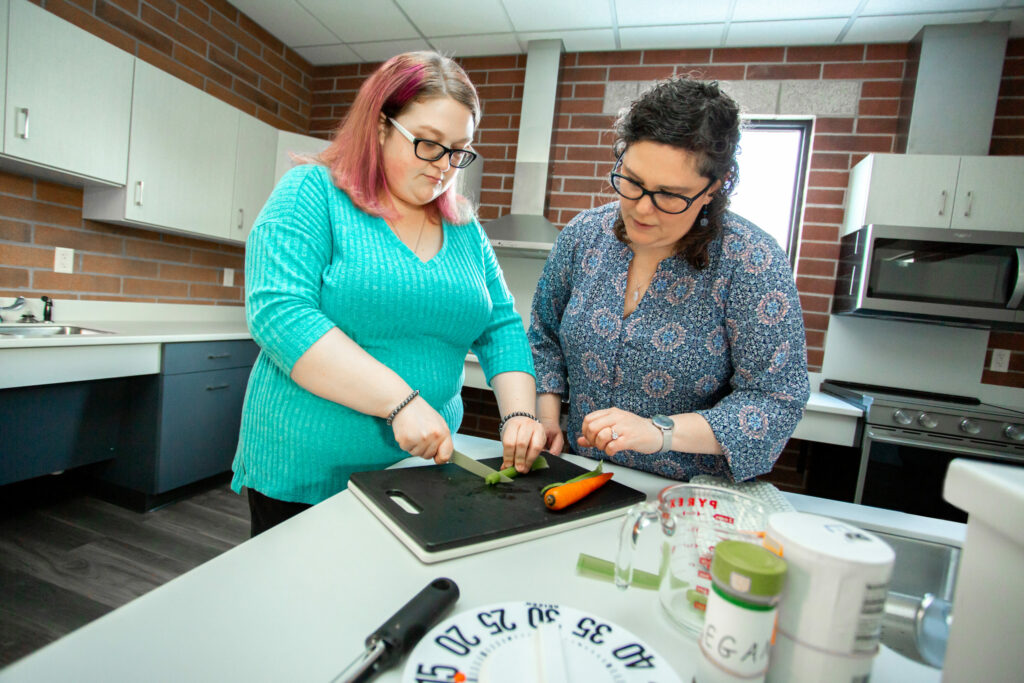
How to Cook Food Safely with a Visual Impairment
Cooking is a vital skill in a person’s everyday life. It can be a fun hobby or a way to try new foods at home. However, when vision loss gets involved, navigating the kitchen may seem like a monumental task. Vision loss does not have to mean the end of cooking, so here are a few tips on how to cook safely for those who are blind or visual impaired.
Kitchen Safety:
The first step in cooking safely is making sure that both the kitchen and yourself are properly set for cooking. We recommend wearing a short sleeve shirt or rolling your sleeves above the elbow to avoid any burns or stains to your clothing. When handling pots and pans, be sure to wear oven mitts. Lastly, make sure to have a timer handy. It will help remind you to turn off the stove or other appliances.
Cutting and Chopping:
The most important thing before starting to use a knife is to make sure the cutting edge is facing downwards. A simple trick to make sure that the cutting edge is facing downwards is to rock the knife blade back and forth on your cutting surface. Since most knifes are curved, it will curve along with the knife and you will feel the motion. Once you have your knife in the right direction, be sure to use a cutting board that contrasts with the food. This will make it easier to identify the item being cut. If you are having issues using a knife, a pizza cutter can be a good alternative.
Handling Pans and Burners:
When placing pans on burners, be sure to position the pan on the burner correctly before turning the stove on. When you are done cooking, make sure to turn off the burner before removing the pan. Both of these precautions reduce the possibility of bumping into or knocking over pans. After the pan is correctly on the burner, you can double check the heat source by holding your palm at chest level and circle your hand around until you find the heat source.
Our Sight Shoppe offers equipment to help those with vision loss maintain their independence. Kitchen equipment including long oven mitts, low vision cutting boards, liquid level indicators and more are sold on-site! With these tips, you will be cooking like a pro in no time. Be sure to meet with your local rehab agency for specialized vision rehabilitation training.
